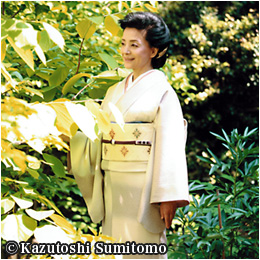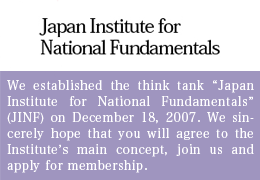FUKUSHIMA’S RECOVERY STARTS WITH LOCAL MUNICIPALITEIS STANDING ON THEIR OWN TWO FEET
Nearly four years after it was hit by a catastrophic earthquake, recovery in Fukushima Prefecture remains slow, 120,000 of its citizens still living in temporary relief housing away from their devastated hometowns. Sending a message of hope that these victims of the quake will assuredly one day return home, a local non-profit organization by the name of Happy Road Net(HRD) started planting cherry seedlings a year after the disaster. They plan to envelop with cherry blossoms the meadows and hills along National Route 6, which cuts across the Hamadori area in the eastern sector of the prefecture.
Since the inaugural plantings done on February 15, 2012, the number of attendees has steadily increased. This year’s event attracted people from such far-off places as Hokkaido and Kyushu, with some 1,200 cherry, thunburg spiraea, and forsythia seedlings being planted.
Takumi Yamada, a first grader at Shoyo High School in Futaba, delivered a moving closing address. His school is due for closure in two years, with several other county high schools such as Futaba, Namie, and Tomioka, meeting the same fate. Yamada discussed what the plantings mean to him:
“The high school I am attending now is destined to be closed down in due time. However, at some time in the future I would like to tell my children that these cherry trees, which I hope will then be profusely in bloom, are among the many trees I planted with a large number of like-minded people today…that we all loved Futaba County with all our hearts and planted these trees with that love of Futaba in mind. I am truly grateful that I was able to participate in the plantings today.”
Yamada’s remarks were greeted with loud applause, assuring the audience that there are young people like him in Futaba who are committed to firmly taking the future of their county under their own wing.
After attending the event in Futaba, I made my way to the Fukushima No. 1 Nuclear Power Plant (F1). It had been about a year since I had been there. My tour of the facilities was led by Naohiro Masuda, who is credited with having saved Fukushima No. 2 Plant (F2) at the time of the tsunami disaster. Masuda now serves as president of the Fukushima No. 1 Decontamination and Decommissioning Company (established in April 2012), which is charged with decommissioning F1 under the Fukushima Revitalization Headquarters (established in January 2013 by Tokyo Electric Power Company [TEPCO], which owns the Fukushima Nuclear Power Plant).
“J Village,” a spacious modern soccer stadium once filled with the happy cheers of children, now is one of the strongholds for the government’s Fukushima recovery scheme. Donning double-bottomed socks, triple-woven cotton and rubber gloves, a radiation-proof suit, a cap, a full-sized mask, and a helmet, I followed Masuda into F1’s premises.
Only from the outside was I permitted to observe the multi-nuclide removal facility there. There currently is some 560,000 tons of contaminated water within the compound. As its volume is increasing daily, TEPCO allegedly is ready to increase the capacity of its storage tanks to 800,000 tons by March.
Damage Caused by Harmful Rumors
As regards the contaminated water at F1, Shunichi Tanaka, chairman of the Nuclear Regulatory Commission, has approved of TEPCO’s plan to remove 62 types of harmful radioactive substances, leaving only tritium, and then discharge the remaining water into the ocean after thoroughly diluting it. Explains Masuda:
“We have begun to be able to reduce the amount of contaminated water from previous levels by resorting to a variety of methods, including one in which we pump out ground water before it flows into our premises. If our multi-nuclide removal system can operate without trouble, we are confident we can process 2,000 cubic meters of contaminated water per day. While we already have managed to basically process about half the 560,000 tons of contaminated water in our premises, our conservative guess is that we will need another year before we can confidently announce that the contaminated water we have processed, with only tritium still left in it, will create no health hazards.”
However, there is yet another hurdle TEPCO must clear—harmful rumors that there are health hazards to the processed water, despite scientific findings to the contrary. It is important that TEPCO finds a way to stop such unfounded rumors. Masuda stresses that, while the public understanding of the issue is gradually improving, the matter must still continue to be pursued in a comprehensive and prudent approach.
Last December 20, the last remaining fuel rods kept in an undamaged storage pool, originally numbering around 1,500, were successfully removed from the ruined No. 4 reactor building—an operation that won high praise from nuclear experts around the world. Once the problems of contaminated water are resolved, decommissioning work involving 1F will move another major step forward.
One gets a clear impression that the premises of Fukushima No. 1 are a much easier place for workers to operate than a year ago. At present, between 6,800 and 7,000 men and women work there on operations aimed at decommissioning the four reactors. TEPCO requires sophisticated technology to complete the decommissioning. In order to secure able technicians, TEPCO contracts its positions for three years on average, rather than continually resorting to competitive bidding. It has also endeavored to improve the working environment as well.
Notes Yoshiyuki Ishizaki, chief representative of the Fukushima Revitalization Headquarters:
“Although nearly 7,000 people work here daily, we can’t provide them meals at F1—because we don’t have cooking facilities here. By the end of next month (March), we will build a meal supply center in the township of Okuma, employ local residents, look primarily for local foodstuffs, and offer hot meals to all of the people working for us here.”
However, much of Okuma Town is currently designated as “difficult-to-return” zones, off-limits without official permission. How is it possible to build a meal supply center there under such conditions? Points out HRN director Ms. Yumiko Nishimoto:
“I suspect it has something to do with matters pertaining to the comensation TEPCO is paying residents for the damage inflicted by the Fukushima disaster. In Okuma Town, areas with high radioactive dosage intermingle with those with low dosage. There is a very big discrepancy between the amount of compensation TEPCO pays those from ‘difficult-to-return’ areas and those who are from ‘possible-to-go-home’ areas. That could intricately affect human relations in this community. There is a possibility that the authorities are trying to designate the largest possible area as ‘difficult-to-return’ so as not to create huge discrepancies in the compensation Okuma residents receive.”
Against such a backdrop, Okuma Town is building the meal supply center, selecting the safest spot in town. “I plan to bury my bones here,” declares Ishizaki. “So I will be the first to eat the local food, settle, and work here.” Impressive words from the very person who said in an interview a year ago that he would not leave until Fukushima is fully back on its feet again.
Waste of Taxpayers’ Money
En route back to J Village after a three-hour visit to Fukushima F1, I saw long cues of people boarding buses one after another. They were employees from TEPCO’s offices across Japan on a three-day and two-night visit to Fukushima, cleaning and clearing away debris during the day at every place under the sun—beaches, Shinto shrines, private homes, schools, municipal offices, national and prefectural highways, graves, temporary living quarters of Fukushima victims, rice fields, ox sheds, and plastic greenhouses. The number of TEPCO employees doing this work exceeds 100,000 a year.
Although the liberal mass-circulation newspaper Asahi Shimbun reports otherwise, all of the TEPCO people on the spot are eager to play their part in contributing to Fukushima’s recovery. Needless to say, TEPCO’s commitment on the whole must continue to be put under strict public scrutiny. As a corporate citizen, TEPCO must scrupulously assume responsibility for this horrendous disaster, supporting recovery efforts until Fukushima is fully back on its feet.
But I believe strongly that politicians in Futaba County must also be subject to close scrutiny as regards matters such as incinerators for low-level radioactive waste. Comments an indignant Ms. Nishimoto:
“Initially, two such incinerators were said to be enough for the county—one for the northern half of the county and another for the southern half. But somehow a decision was eventually made to provide one incinerator to each of the eight municipalities that make up Futaba County. For instance, Namie Town will require \43 billion (approximate US$360 million) and Tomioka Town \53 billion (US$442 million) in taxpayers’ money for the incinerators; the incinerators for the remaining municipalities will cost about the same. It simply doesn’t make sense that each of these small municipalities requires an incinerator of its own. Additionally, the land on which the incinerators stand is leased for only three years, and large payments will likely be required when the leases are renewed. That will also be paid for by taxpayers. If the government is ready to spend that much, we would rather the taxpayers’ money be invested more wisely in infrastructure such as hospitals, housing, and transportation. That is how the government should be working for the public.”
In point of fact, there is no small number of cases that make one wonder how casually our tax money has been wasted on the pretext of contributing to Fukushima’s reconstruction. My visit to Fukushima on this day convinced me that Fukushima’s real recovery will be hard to come by unless we turn our close attention to this important fact.
(Translated from “Renaissance Japan” column no. 644 in the February 26, 2015 issue of The Weekly Shincho)








